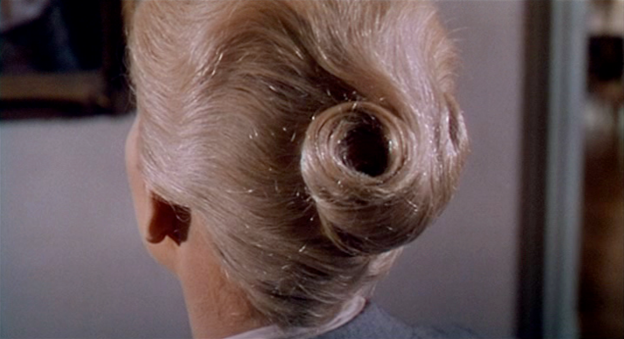 It’s difficult to review a film you know so much about. In my time as a film lover I had somehow, until today, skipped over watching Hitchcock’s most often cited work, but had not avoided countless documentaries showing and analysing various key images from Vertigo. This meant that, added to the suspense and mystery inherent in the film, I spent the whole film in a state of perpetual déjà vu. Strangely I don’t think this detracted from my experience significantly. Given that one of the themes of the film is doubling ambiguous personality, the pervasive and familiar imagery heightened the unease. As the characters on screen fall into endless spiral patterns, the modern viewer, saturated with the imagery, falls into their own memories.
It’s difficult to review a film you know so much about. In my time as a film lover I had somehow, until today, skipped over watching Hitchcock’s most often cited work, but had not avoided countless documentaries showing and analysing various key images from Vertigo. This meant that, added to the suspense and mystery inherent in the film, I spent the whole film in a state of perpetual déjà vu. Strangely I don’t think this detracted from my experience significantly. Given that one of the themes of the film is doubling ambiguous personality, the pervasive and familiar imagery heightened the unease. As the characters on screen fall into endless spiral patterns, the modern viewer, saturated with the imagery, falls into their own memories.
Hitchcock is well known as a perfectionist with every shot planned months before it was even potentially going to be shot. Personally, I find that this leads to a very dry execution. His technique is so perfectly honed that it loses all spontaneity . Like spending time with an exquisite automaton, it’s just missing heart. However, that doesn’t detract from the technical masterclass that is Vertigo. It felt like when I first watched Citizen Kane and understood the dynamics of camera angles. In the case of Vertigo the sets, angles and movements are all conceived for the purpose of making the film feel vertiginous. The predominant colour scheme is green and red, two complementary colours. The juxtaposition is like on a hypnotist’s spinning wheel, too much of it and anyone would start to feel sick. Earlier in the film this is tempered by the calming, hopeful yellow influence of Midge’s clothes and Scottie’s apartment. As the plot thickens these colours disappear to be replaced with the giddy red and green, the only break being the bleak blues of the sanatorium Scottie resides in. The colours program condition the audience, we see a green car and know who should be driving it. When Scottie sees a woman in a green dress we know she is important without thinking. Despite the huge number of doubles that have worn the same clothing as Madeleine the girl in the green dress sticks out. The colour translates the character’s essence, rather than just the physical resemblance the other doubles had. Kim Novak’s hair and make up change so drastically that even the viewer is unsure whether it really really is the same girl. With such a discrepancy in appearance being necessary to the plot the only link she has is the colour green. Surely it is astounding that a filmmaker can, in less than an hour establish a character so irreversibly linked to a colour.
Much of the framing in the film includes a frame within a frame, each progressively smaller, wallpapers are picked that have swirls and spirals on them. It’s no coincidence that the chase sequence using the iconic dolly zoom is in a spiral staircase. Not only do these shapes evoke a feeling of falling into a loop but they are doubles of each other, copies and lesser clones like the ones that haunt Scottie in the latter half of the film. Scottie feels as if the whole world is filled with fakes and replicas and so, with him as protagonist, Hitchcock shows us the world through his eyes using the organic patterns that litter the film.
When Scottie has a dream about the events of the film it is rendered onscreen as a series of shapes and colours, wordless and emotionless. This sequence epitomises the whole film, a story told in the intellectual reactions to pattern and colour rather than through the script. It’s one of few films that try to abandon spoken language in favour of filmic grammar. It’s a remarkable example of cinematic tradition but it’s not going into my list of favourite films any time soon.
- Entertainment: 1/5
- Artistic: 5/5
- Intellectual: 5/5